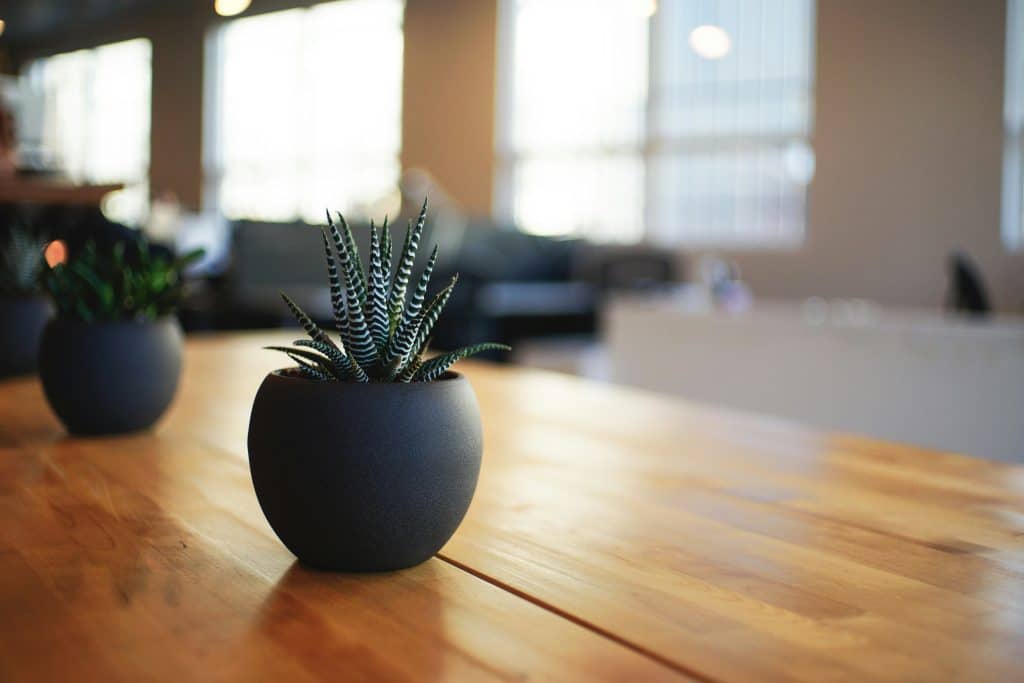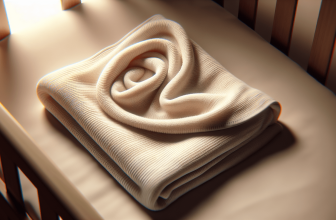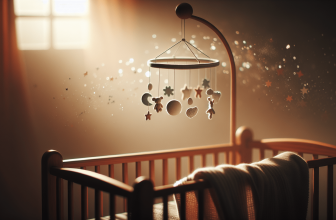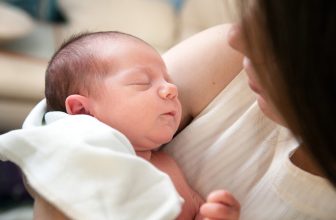Imagine you’re about to welcome a bundle of joy into your home, filled with excitement but also a touch of apprehension. You want to create a safe and secure environment for your little one, but where do you even begin? Look no further – “Baby Proofing Your Home: A Comprehensive Room-by-Room Guide” is here to help. This article will guide you through each room of your house, providing practical tips and expert advice on how to effectively baby proof every nook and cranny. From securing cabinets in the kitchen to covering electrical outlets in the living room, we’ve got you covered. So, grab a cup of tea and get ready to transform your home into a haven for your little explorer.

This image is property of images.unsplash.com.
Living Room
The living room is a space where you and your family spend a significant amount of time, making it essential to ensure a safe environment for your little one. Here are some key areas to focus on when babyproofing your living room.
Electrical Outlets
One of the first things you should tackle is electrical outlet safety. Babies are naturally curious and love to explore by sticking their fingers or objects into outlets. To prevent accidents, consider using outlet covers or plug protectors that block access to the outlets. These affordable and easy-to-install devices provide a physical barrier, keeping your baby safe from potential electrical shocks.
Cord Management
The living room usually has various cords and cables for electronic devices that can pose a strangulation hazard to curious infants. Ensure cords from lamps, televisions, and other electronics are safely secured and out of your baby’s reach. Use cord concealers or cable clips to keep them neatly tucked away from tiny hands.
Furniture Safety
Large furniture items like sofas, bookshelves, or TV stands can be dangerous if not adequately secured to the wall. Babies tend to grab onto furniture and can accidentally tip it over, causing serious injuries. Use furniture anchors or wall straps to secure heavy pieces to the wall. This precaution will prevent toppling accidents and give you peace of mind.
Sharp Corners
Inquisitive little explorers are prone to bumping into sharp corners of furniture, which can lead to painful cuts or bruises. Consider investing in corner protectors or edge guards that cushion the sharp edges of furniture. By adding these simple safety measures, you can reduce the risk of accidents and make your living room a safer place for your baby to navigate.
Fireplace Safety
If you have a fireplace in your living room, it’s crucial to implement proper safety precautions. Start by adding a sturdy fireplace gate or screen to create a physical barrier between your baby and the flames. Ensure that the gate is securely attached and cannot be easily knocked down. Additionally, never leave your child unattended in the room if the fireplace is in use or still hot.
Kitchen
The kitchen is another area in your home that poses numerous potential hazards for your little one. Take the following steps to create a safer environment in your kitchen.
Cabinet Locks
Cabinet locks are essential to prevent your curious baby from accessing potentially harmful items such as cleaning supplies, sharp utensils, or even delicate china. Install childproof cabinet locks on all lower cabinets, especially those containing hazardous substances. These locks typically have easy-to-use mechanisms that are child-resistant but can be opened by adults with a quick motion.
Stove Safety
The stove is a potential burn hazard, and it’s vital to take measures to prevent your baby from getting too close to the cooking area. Consider installing stove knob covers to prevent your child from accidentally turning on the burners. Additionally, you can use stove guards to create a physical barrier between your little one and the hot surfaces. Always supervise your child when you’re in the kitchen and keep them at a safe distance from the stove.
Sharp Objects
Knives, scissors, and other sharp objects should be stored securely out of your baby’s reach. Use knife blocks or high shelves to keep these items safely stowed away. Be diligent about putting sharp utensils away immediately after use, as even a momentary lapse in attention can lead to accidents.
Chemicals and Cleaning Supplies
Cleaning products, dishwasher detergent pods, and other chemicals should be stored in high cabinets with childproof locks or in a locked cabinet. It’s also important to be cautious when using these substances in your baby’s presence to avoid accidental exposure. Consider using natural, child-friendly cleaning products wherever possible.
Appliance Safety
Kitchen appliances, such as blenders, toasters, and microwave ovens, present various risks to your little one. Keep appliances unplugged when not in use and store them out of your baby’s reach. Be mindful of dangling cords and ensure they are properly secured to prevent your child from pulling on them. Additionally, always supervise your baby closely when using appliances to avoid accidents.
Bathroom
As a space with slippery surfaces and numerous hazardous objects, the bathroom requires special attention when it comes to babyproofing. Here are some essential tips for creating a safer bathroom environment for your little one.
Toilet Safety
Toilets can be fascinating to babies, but they also pose drowning hazards. Prevent accidents by using toilet seat locks or lid locks to keep the toilet securely closed when not in use. Additionally, always monitor your child closely when they’re in the bathroom to ensure they don’t have access to the toilet unsupervised.
Water Temperature
Bath time should be a safe and enjoyable experience for your baby. Adjust your water heater so that the maximum temperature is around 120 degrees Fahrenheit (49 degrees Celsius). This temperature helps prevent scalding injuries. Test the water with your hand or an appropriate thermometer before placing your baby in the bath to ensure it’s at a safe temperature.
Slippery Surfaces
Bathroom floors can be slippery, especially when wet. Place non-slip bath mats or adhesive strips on the floor to provide traction and reduce the risk of falls. It’s also a good idea to use a non-slip bath mat inside the bathtub or shower to prevent your baby from slipping. Always hold your baby securely during bath time to prevent accidents.
Medications and Toiletries
Keep all medications, including over-the-counter drugs, prescription medications, and vitamins, in a locked medicine cabinet or high shelf that is out of your baby’s reach. Additionally, store toiletries such as perfumes, lotions, and shampoos in secured cabinets or shelves. Be cautious when using these products while your baby is present, as even a small amount can be harmful if ingested.
Electrical Appliances
Hairdryers, electric razors, and other electrical appliances should be stored safely out of reach and used with caution. Be mindful of cords and avoid leaving them plugged in and unattended. When using electrical appliances in the bathroom, keep them away from water sources and always unplug them after use.
Bedroom
Your baby’s bedroom should be a safe and nurturing space where they can sleep and play without hazards. Take the following steps to ensure a secure environment.
Crib Safety
Cribs are the centerpiece of a baby’s bedroom, and it’s crucial to prioritize crib safety. Select a crib that meets the current safety standards and avoid using older or outdated models that may have potential safety hazards. Ensure that the crib slats are the appropriate distance apart to prevent your baby from getting stuck. Also, avoid placing any stuffed animals, pillows, or blankets in the crib until your baby is older to reduce the risk of suffocation.
Blind and Curtain Cords
Blind and curtain cords can pose a serious strangulation danger to young children. To eliminate this risk, use cordless window coverings or tie up cords high out of your baby’s reach using cord winders or safety tassels. It’s crucial to regularly check that cords are inaccessible to your child to prevent accidents.
Window Safety
Windows should be secure and inaccessible to your baby. Install window guards or window locks to prevent your child from opening windows too wide or falling out. Keep furniture, cribs, and other climbable objects away from windows to discourage your baby from attempting to reach them.
Furniture Stability
Ensure that all furniture pieces, such as dressers, bookshelves, or nightstands, are stable and securely anchored to the wall. Babies love to pull themselves up to standing, and unstable furniture can easily tip over, causing severe injuries. Use furniture anchors or wall straps to prevent accidents and ensure the safety of your little one.
Access to Small Objects
Babies love to explore and put things in their mouths, so it’s crucial to eliminate access to small objects that can be choking hazards. Keep small toys, coins, batteries, buttons, and any other objects that can fit through a toilet paper tube out of your baby’s reach. Regularly scan the floor and inspect your baby’s play area to ensure there are no hazards within reach.

This image is property of images.unsplash.com.
Nursery
Your baby’s nursery is a haven for sleep and play, and it’s essential to keep it safe and secure. Follow these guidelines to create a baby-friendly environment.
Crib Safety
As mentioned before, crib safety is of utmost importance in your baby’s nursery. Ensure that the crib meets safety regulations, and follow the manufacturer’s instructions for assembly. Always place your baby on their back to sleep, and avoid using loose bedding, pillows, or stuffed animals in the crib until your child is older.
Changing Table Safety
Changing tables should have raised sides or safety straps to prevent your baby from rolling off. Always keep one hand on your baby during diaper changes, even if the table has safety features. Keep diapering supplies within arm’s reach but out of your baby’s grasp to prevent accidental spills or reaching for hazards.
Securely Anchored Furniture
Just like in the bedroom, nursery furniture should be appropriately anchored to the wall to prevent tipping accidents. Bookshelves, dressers, and other furniture items can become top-heavy when pulled or climbed upon. Use furniture anchors or wall straps to ensure stability and eliminate the risk of furniture tipping over.
Loose Bedding and Stuffed Animals
Although adorable, loose bedding and stuffed animals can pose suffocation hazards. Until your baby is older, it’s best to avoid using pillows, blankets, or stuffed animals in the crib. Instead, opt for sleep sacks or wearable blankets to keep your baby warm and cozy during sleep.
Toy Safety
Ensure that your baby’s toys are age-appropriate and free from small parts that can be choking hazards. Regularly inspect toys for loose parts or damage, and discard any broken or unsafe items. Keep small toys out of your baby’s reach, and encourage safe play by selecting toys that are specifically designed for infants.
Hallways and Stairs
Hallways and staircases are often overlooked when babyproofing, but they can pose significant risks. Take the following steps to make these areas safer for your little one.
Safety Gates
Installing safety gates at the top and bottom of staircases is crucial to prevent falls. Choose gates that are specifically designed for top-of-stairs use, as they provide extra security. Additionally, use safety gates to restrict access to certain rooms or areas where your baby should not be unsupervised, such as home offices or storage rooms.
Staircase Safety
Ensure that your staircase is in good condition, with no loose or damaged steps or handrails. Consider installing non-slip treads on each step to provide additional traction. Teach your baby to climb stairs safely by always supervising them closely during the learning process and teaching them to hold onto the handrail.
Secure Handrails
Handrails should be secure and able to withstand the weight of both adults and children. Regularly check that handrails are properly tightened and not wobbly. If you notice any issues, repair or replace them promptly to prevent accidents.
Eliminate Trip Hazards
Keep hallways and staircases clear of toys, shoes, or any other potential tripping hazards. Regularly scan these areas for any items that have been left behind and remove them promptly. It’s also a good idea to secure loose rugs or mats to prevent slipping or tripping.
Nightlights
Install nightlights in hallways and near staircases to provide gentle illumination during the night. This way, you can easily navigate through the house without the need for bright lights that may disturb your baby’s sleep. Nightlights also help prevent accidental falls or bumping into objects in the dark.

This image is property of images.unsplash.com.
Windows and Doors
Windows and doors are access points that require special attention during babyproofing. Take these steps to ensure your baby’s safety around windows and doors.
Window Guards
Consider installing window guards on all windows accessible to your baby. Window guards create a physical barrier that prevents your child from falling out of an open window while still allowing fresh air to circulate. Ensure that the window guards are securely installed and comply with relevant safety regulations.
Door Locks
Install childproof door locks or handles on all doors that lead to dangerous areas, such as utility rooms or outdoor spaces. These locks prevent your baby from wandering into unsafe areas or opening doors that may lead to hazardous situations. It’s important to choose door locks that are both secure and easy for adults to open in case of emergencies.
Door Stoppers
Avoid the risk of your baby’s fingers getting caught in closing doors by using door stoppers or door guards. These simple devices prevent doors from closing fully, leaving a small gap that ensures your baby’s fingers are safe. Be sure to use door stoppers that are durable and not easily removable by your child.
Curtain and Blind Safety
As mentioned earlier, blind and curtain cords can pose a strangulation risk for infants and young children. Use cordless window coverings whenever possible, or secure cords high out of reach using cord winders or safety tassels. Regularly inspect blind and curtain cords to ensure they do not pose a hazard.
Balcony and Patio Safety
If you have a balcony or patio, take steps to prevent access to these areas until your baby is old enough to navigate them safely. Ensure that balcony or patio doors are securely locked and use childproof door handles or locks to prevent your baby from opening them. Always supervise your child closely when spending time on these outdoor spaces.
Laundry and Utility Room
The laundry and utility room often contains various hazards that require careful attention. Follow these guidelines to minimize potential risks.
Locked Cabinets
Keep all cleaning products, detergents, and other chemicals securely stored in locked cabinets or high shelves that are out of your baby’s reach. By doing so, you prevent accidental ingestion or exposure to harmful substances. Additionally, keep laundry baskets or hampers out of reach to avoid your child climbing into them or accessing clothes contaminated with cleaning products.
Chemical Storage
Proper storage of chemicals is crucial in the laundry and utility room. Ensure that all containers are tightly sealed and stored upright to prevent leaks. Follow the manufacturer’s instructions for storing and disposing of chemicals, and always keep them away from your baby’s reach.
Appliance Safety
Laundry and utility room appliances such as washing machines, dryers, and dishwashers have their own set of risks. Keep these appliances securely closed when not in use, and use childproof locks or latches if necessary. Also, be mindful of cords and ensure they are not within your baby’s reach to prevent accidental pulls or tipping of appliances.
Water Heater and Furnace Safety
If your water heater or furnace is located in the laundry or utility room, take precautions to ensure their safety. Consider installing safety gates or barriers around these appliances to prevent your baby from accessing them. Regularly inspect the area for any leaks, loose connections, or unusual noises and promptly address any issues to maintain a safe environment.
Accessible Laundry Detergent
Laundry detergent pods can be mistaken for toys or candy by curious children. To prevent accidental ingestion, keep laundry detergent pods in child-resistant containers and store them high up or locked away in a secured cabinet. If possible, switch to traditional liquid or powder detergents that pose less of a risk to your little one.
Garage
The garage is often filled with potential dangers, from tools and chemicals to car-related hazards. Take the following steps to ensure a safer garage environment for your child.
Garage Door Safety
Garage doors can pose serious risks to children if not properly maintained or secured. Test the garage door’s safety sensors to ensure they are functioning correctly. Regularly inspect the garage door for any signs of damage, wear, or malfunction. If you notice any issues, seek professional assistance for repairs or replacement.
Tool Storage
Store tools and equipment in locked cabinets or high shelves that are inaccessible to your child. Keep sharp tools, power tools, and gardening equipment securely stored and out of reach. If gardening tools or other items must be within your child’s reach, ensure they are securely locked or sheathed to prevent accidental injuries.
Chemical Storage
Ensure that all chemicals, including gasoline, pesticides, and cleaning products, are stored in locked cabinets or high shelves. Be cautious when using chemicals in the garage, and never leave them unattended if your child is present. Consider opting for safer, natural alternatives whenever possible.
Electrical Safety
The garage often contains various electrical outlets, extension cords, and other potential electrical hazards. Keep outlets covered when not in use and secure cords to prevent your child from pulling on them. Repair or replace any damaged electrical outlets or cords to prevent shocks or injuries.
Car Safety
Cars pose a unique set of hazards, both in the garage and when in use. Ensure that your garage is a safe place for your child by keeping the car keys out of reach. Never leave your child alone in or around a vehicle, even for a short period of time. Additionally, remember to lock your car when it’s parked in the garage to prevent your child from accessing it.
Outdoor Areas
Outdoor areas provide a wonderful opportunity for your child to explore nature and develop physically. However, it’s crucial to take steps to ensure their safety. Consider the following guidelines to create a safer outdoor environment.
Fence and Gate Safety
If you have a backyard or outdoor space, it’s important to have a secure fence and gate system. Regularly inspect the fence for any damaged or loose areas that your child could potentially squeeze through. Install self-closing and childproof locks on all gates to prevent unauthorized access and keep your child safely contained.
Playground Equipment Safety
If you have a backyard playset or playground equipment, it’s essential to ensure its safety. Regularly inspect the equipment for any signs of wear, loose bolts, or damaged parts. Ensure that the playset is properly anchored to the ground to prevent tipping. Consider using soft landing surfaces, such as mulch or rubber tiles, beneath the equipment to reduce the risk of injury from falls.
Pool Safety
If you have a swimming pool, take extra precautions to prevent drowning and water-related accidents. Install a secure fence with self-closing gates around the pool area to prevent your child from accessing it unsupervised. Consider using pool alarms and safety covers to add an extra layer of protection. Always supervise your child closely when near water and only allow them in the pool under your direct supervision.
Gardening and Lawn Tools
Gardening and lawn tools, such as rakes, shovels, and lawnmowers, can pose serious risks to children. Ensure that all tools are securely stored out of your child’s reach when not in use. Keep sharp tools properly sheathed and securely locked to prevent accidental injuries. When working in the yard, be sure to involve your child in safe and age-appropriate activities to foster their love for nature while keeping them safe.
Sun Protection
Outdoor play often exposes children to the sun’s harmful rays, which can lead to sunburns and long-term skin damage. Protect your child by applying sunscreen with SPF 30 or higher whenever they’re exposed to the sun. Dress your child in protective clothing, including hats and sunglasses, and seek shade during peak UV hours. Encourage regular hydration to prevent heat-related illnesses.
By thoroughly babyproofing each room in your home, you can create a safer environment for your little one to explore, play, and grow. Remember, every child is unique, and their developmental stages vary, so continue to reassess and update your babyproofing efforts as your child grows. With the right precautions in place, you can help ensure a safe and secure home for your baby to thrive in.








